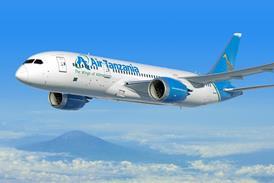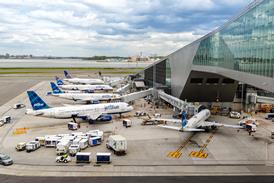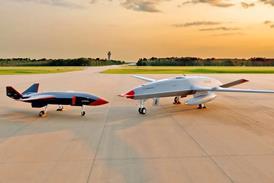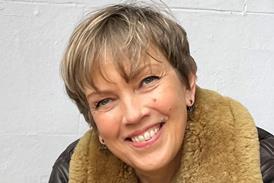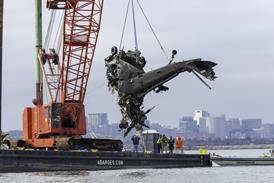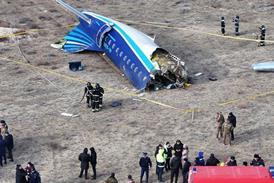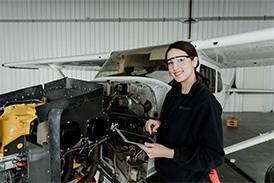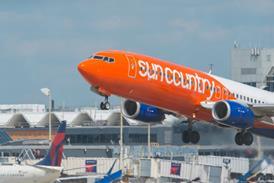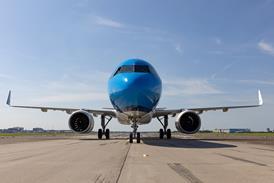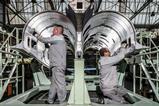Cranfield Aerospace Solutions (CAeS) is closing in on fresh investment from existing shareholders that should secure its immediate future and allow the start of ground tests of its hydrogen fuel cell powertrain.
At least, that is the upbeat message from its newly installed chief executive Hanif Nabi, who takes over the reins after a deep management restructure that has seen the departure of several senior staff – including his predecessor Paul Hutton – and the growing external perception, disputed by CAeS, that it had abandoned its highest profile project, the fuel cell conversion of a Britten-Norman BN-2 Islander.

Part-funded by the UK Aerospace Technology Institute (ATI), Project Fresson would have seen one of the Islander’s two piston engines replaced by a 250kW fuel cell powertrain. But despite having acquired the test airframe (G-HYUK), deadlines for the first flight repeatedly slipped and although internal work continued, some activities with suppliers were paused, the company notes.
Nabi, speaking exclusively to FlightGlobal, says the key issue for the firm has been money. While the company’s shareholders have continued to back the business, there has not been sufficient funding to advance the project to the build-and-test phase.
Although CAeS secured investment from HydrogenOne Capital Growth and Safran Corporate Ventures in March 2022, and Motus Ventures and the United Arab Emirates’ Strategic Development Fund (SDF)/Tawazun later that same year – the latter then increasing its stake in 2023 – like many in the sector, it has since struggled to attract additional capital amid challenging market conditions.
While CAeS is “sat on a pretty outstanding stunning design that has a very realistic chance of working”, says Nabi, “our challenge has been to raise the investment to move to the next stage”.
“We have tried to raise funding and have got close to it at times, but we have found it very hard,” he says. “That is what has caused the delay in moving from design to the next stage – build and testing [of the powertrain].”
However, Nabi is confident that phase is nearing an end. He says CAeS is working with all three of its current major backers but “one or two are better placed at this time”.
He declines to identify which of its existing investors will commit more money, although SDF/Tawazun and Safran Corporate Ventures are thought to be the frontrunners.
Additionally, Nabi will not specify at this point exactly how much is being pledged, save to say that in the short term it will enable CAeS to at least build and test the powertrain.
“The funding we have been discussing potentially takes us to and beyond that stage,” he adds.
“We are still working with our shareholders to finalise the commercial options. We hope it will be at least 12-18 months [of cash runway] but it is not certain yet because we have got to deliver the next stage and we are focused on the build and test element.”
But the new funding comes with strings attached. Although one backer in late 2024 “declared they would invest significant funds”, says Nabi, “there were a couple of conditions with that”.
Firstly, CAeS had to “look further afield” for applications for the in-development powertrain, “to see whether we could utilise our design as far as possible”. And second, the company had to “refocus”.
There were also, he says, “some other minor changes across the business and at the same stage some of the senior team decided it was the time to move on to different things”.
But were the management changes, and Hutton’s departure in particular, mandated by the investor? Nabi insists not.
“Not to my knowledge, no; it was a decision [the individuals] made.”
However, this is an assertion disputed by sources. “That’s not correct – it was absolutely a requirement,” says one.
Regardless of cause, it is undeniable that many senior staff have left: in addition to the former chief executive going, CAeS has lost its chief engineer and his deputy, its chief strategy officer, director of external relations, and business development manager.
Nabi says the wider engineering team is still intact but concedes it has been “simplified”.
“A very small number [of staff], less than a handful, have moved for different reasons. But the vast majority remain.
“So, its capability and effectiveness have not been impacted at all… it’s more in tune with what [is needed] going forwards.”
While an internal candidate has replaced the departing chief engineer, the post of deputy has been removed, he adds.
In addition to the management shake-up, there have been other changes – insiders say CAeS has pivoted away from the Islander conversion to focus on another platform, the Black Swan cargo drone being developed by Dronamics, another firm in which SDF/Tawazun has invested.
“The way I saw it, there were two conditions with the future of the company: streamlining and the switch of platform [for the powertrain],” says a source. “The demonstrator would not be the Islander, it would be the Black Swan.”
Nabi does not dispute that the focus has moved away from the BN-2 but says no decision has been taken on what aircraft the powertrain may be tested on, nor the launch platform.
CAeS in 2023 signed a memorandum of understanding with Dronamics which included a tentative agreement for the supply of potentially thousands of hydrogen propulsion systems for the Black Swan, a 350kg (770lb)-payload cargo drone.
Although that aircraft “has a chance” of being the launch application, “a number of platforms have a chance”, Nabi says.
Indeed, with the immediate priority to “validate the design”, he insists there has been no decision taken on the first application: “Nothing is out, nothing is in.”
No pressure is being applied by the common shareholder to move one way or the other, he adds, more “the pressure of what’s good for business”.
He points out that both the company and its analysis of the addressable market have evolved since Project Fresson was launched in 2019.
As the fuel cell technology is “scaleable and modular” it “can be used on a range of platforms”, he says, adding: “Our thinking has evolved over the last 12-18 months.
“Where we eventually go with product commercialisation… has to be backed up by a commercial case,” he adds.
“So rather than saying we are going to do that platform, we are a little bit more circumspect now. There’s a range of platforms and there are a number of steps we need to get through before we make our final decision.”
But from the outset, the plan was that the powertrain being developed under Fresson would fly on the BN-2.
He stresses that Fresson’s goal was to “validate the technology” and “it wasn’t about a platform per se”.
In all, the ATI has provided around £8 million ($10.6 million) of public money towards the project over a five-year period ending in March this year, a figure more than matched by the private sector.
Nabi says CAeS has kept the funding body informed of the shift in project scope. “The ATI is fully abreast of where we are. They know the constraints we have and why we have not flown – it’s down to investment, nothing technical.
“[The ATI knows] our desire to validate the design going forward, both on the ground and in the air… they are aware of the options that are open to us, including the Islander platform.”
Nabi maintains “the majority of deliverables have been achieved” on the project, and the outstanding items “are part of the ongoing discussion we have with the ATI on how best we can deliver them”.
But even considered against the project’s modified goals – its first target was full electrification of the Islander – there will be plenty of critics ready to label Fresson a waste of money.
“Absolutely not,” is his unequivocal response. “Considering how far we have got with some of the technology and the design – no, not at all.”
Fresson’s effective conclusion does not preclude CAeS tendering for additional funding for other projects either. “We have some minor to major projects – technology projects – that would be grateful for ATI funding,” he adds.
Of course, the acid test for the 250kW powertrain is yet to come. Nabi says if the investment materialises as planned, it will allow CAeS to start building the system and move to testing by around year-end.
However, CAeS is sufficiently confident in receipt of the funding that it has already ordered long-lead items for the powertrain, FlightGlobal understands.
Longer-term questions remain over the thermal management of the fuel cell system, however.
CAeS had previously opted to use heat-exchangers supplied by fellow SDF-backed company Reaction Engines – a business that closed last year after running out of cash.
Although CAeS “is in custody of the [Reaction] heat-exchangers and the information to use them”, securing the test programme in the short term, a dedicated supplier is needed for the production version.
But Nabi is “pretty confident” that issue can be resolved. “We have already done a lot of work and know there are alternatives around there and alternative organisations; technology has moved on in different ways in the last several years.”
Unsurprisingly, perhaps, given the state of flux at CAeS, he is also reticent to commit to any timeline for the fuel cell system to enter commercial service. But based on typical aerospace timelines, the back end of the decade is a fair bet.
Of course, that means there is a likely impact on the handful of tentative customers for the fuel cell powertrain – Evia Aero, Loganair, and Monte Aircraft Leasing, for example – particularly if, as expected, a platform other than the Islander is given priority.
“We have kept them abreast of the situation. We have spoken to them – we chose to speak to them before we spoke to anyone else,” he says.
Those operators have been “very understanding” and “the dialogue is pretty positive”, he adds.


